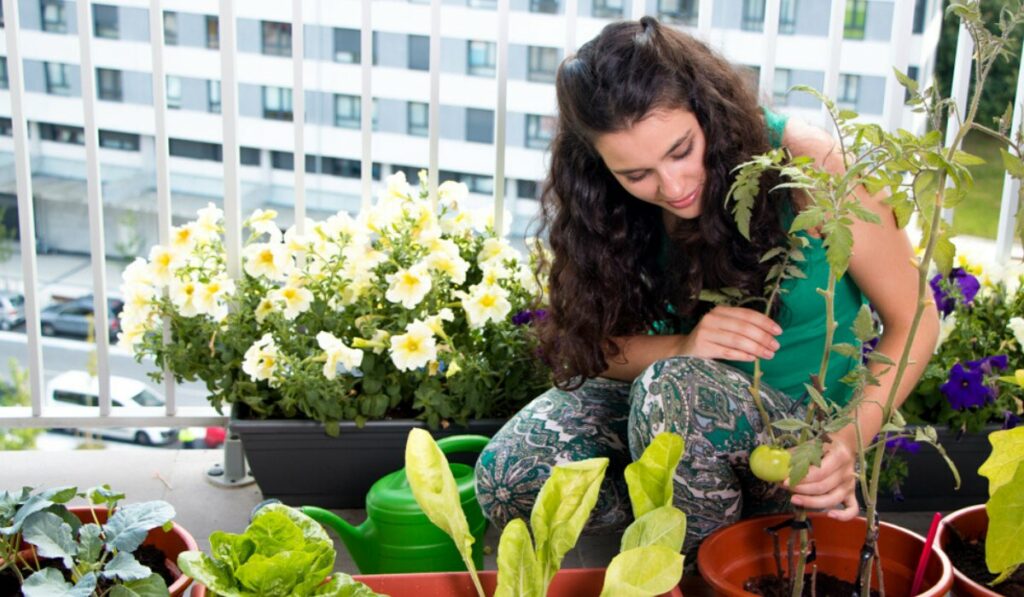Cultivating Green Havens: A Comprehensive Guide to Establishing a Kitchen Garden at Home in 8 Easy Steps

Introduction:
In the pursuit of sustainable living and a deeper connection with nature, setting up a kitchen garden at home has become an increasingly popular and rewarding endeavor. Growing your own herbs, vegetables, and fruits not only provides a fresh supply for your kitchen but also promotes a sense of accomplishment and well-being. In this comprehensive guide, we will explore eight easy steps to help you embark on the journey of creating a thriving kitchen garden right in the comfort of your home.
I. Choose the Right Location:
- Sunlight and Accessibility:
- Identify a location that receives ample sunlight throughout the day. Most edible plants thrive in full sunlight, so choose a spot with at least 6-8 hours of direct sunlight.
- Ensure that the location is easily accessible for daily care and harvesting. The proximity to your kitchen makes it convenient to incorporate fresh produce into your daily meals.
- Consider Container Gardening:
- If space is limited or you lack a traditional garden area, consider container gardening. Use pots, containers, or raised beds filled with nutrient-rich soil to create a versatile and space-efficient kitchen garden.
- Container gardening allows you to move your plants around to optimize sunlight exposure and is ideal for balconies, patios, or small yards.
II. Select the Right Plants:
- Know Your Growing Zone:
- Determine your USDA plant hardiness zone to understand the climate conditions in your region. This information will guide your plant selection, ensuring you choose varieties that thrive in your specific environment.
- Consider the local climate, average temperatures, and frost dates to make informed choices about the types of plants suitable for your kitchen garden.
- Start with Easy-to-Grow Herbs and Vegetables:
- For beginners, focus on easy-to-grow herbs and vegetables such as basil, mint, cherry tomatoes, and lettuce. These plants are resilient, require minimal maintenance, and provide a quick harvest, boosting your confidence as a gardener.
- As you gain experience, you can gradually introduce more challenging plants and expand the variety in your kitchen garden.
III. Prepare the Soil:
- Optimize Soil Quality:
- Healthy soil is the foundation of a successful kitchen garden. Conduct a soil test to assess its composition, pH, and nutrient levels. Amend the soil with organic matter, such as compost, to improve its structure and fertility.
- Ensure proper drainage to prevent waterlogged roots. Well-draining soil promotes healthy root development and reduces the risk of root diseases.
- Container Garden Soil Mix:
- If you opt for container gardening, use a high-quality potting mix. Container plants rely on the soil within the container, so choose a mix specifically formulated for container gardening, providing adequate aeration and water retention.
IV. Planting and Maintenance:
- Follow Proper Planting Practices:
- Plant your chosen herbs and vegetables following recommended spacing guidelines. Pay attention to the depth of planting and water the plants thoroughly after planting to help them establish roots.
- Mulch around your plants to conserve moisture, suppress weeds, and regulate soil temperature. Mulching also enhances the aesthetics of your kitchen garden.
- Implement Regular Care and Maintenance:
- Establish a consistent watering routine, keeping the soil consistently moist but not waterlogged. Use a drip irrigation system or a watering can with a fine nozzle to avoid disturbing the soil.
- Monitor for pests and diseases regularly. Early detection allows for prompt intervention, preventing potential damage to your plants. Consider natural pest control methods such as companion planting and introducing beneficial insects.
V. Harvesting and Enjoying the Fruits of Your Labor:
- Practice Timely Harvesting:
- Harvest your herbs and vegetables when they reach their peak ripeness. Regular harvesting promotes continuous production and prevents plants from diverting energy into seed development.
- Use clean, sharp tools to avoid damage to the plants. Harvesting in the morning is generally preferable when the plants are hydrated and the temperatures are cooler.
- Explore Culinary Creativity:
- Once you’ve harvested your home-grown produce, embark on a culinary journey by incorporating fresh herbs and vegetables into your meals. Experiment with new recipes and savor the flavors of ingredients cultivated with care.
- Share your homegrown bounty with friends and family, fostering a sense of community and appreciation for sustainable living.
VI. Continuous Learning and Adaptation:
- Learn from Experience:
- Gardening is a dynamic and evolving process. Learn from each growing season, taking note of what worked well and areas for improvement.
- Experiment with different plant varieties, growing techniques, and companion planting to enhance your gardening skills and expand the diversity of your kitchen garden.
- Stay Informed and Inspired:
- Stay connected with the gardening community through books, online resources, and local gardening clubs. Attend workshops or webinars to gain insights from experienced gardeners and horticulturists.
- Draw inspiration from successful kitchen gardeners, whether through social media, gardening blogs, or community events. Sharing experiences with fellow gardeners can provide valuable tips and motivation.
Conclusion:
Setting up a kitchen garden at home is a fulfilling journey that not only yields fresh and flavorful produce but also fosters a deeper connection with nature. By following these eight easy steps, you can create a thriving kitchen garden tailored to your space, preferences, and level of gardening experience. Embrace the joy of cultivating your own herbs and vegetables, savor the fruits of your labor, and relish the satisfaction of contributing to a sustainable and healthy lifestyle. Happy gardening!







